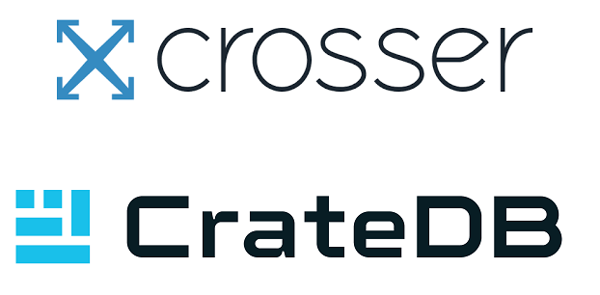Kevin Ashton, the father of the notion of the Internet of Things, wrote in 1999:
“If we had computers that knew everything there was to know about things — using data they gathered without any help from us— we would be able to track and count everything and greatly reduce waste, loss, and cost”
It feels like a century ago. No social media, no internet and phone calls at the same time (remember this?) and the trendiest thing was to have a Nokia 8210. Still, Kevin Ashton was able to imagine how the era of the Internet of Things would look like in the future… And it is a lot like today.
The big data revolution has changed the world as we know it. Not only that: it is changing the way we make decisions.
We are all familiar with the pressures of decision making: am I making the right choice? Have I considered all the possibilities? Certainly, complex decisions are stressful. There is so much to consider, and we want to make sure we get everything right. Nonetheless, we often make mistakes... We are just humans.
But computers don’t have our limitations. They have access to a massive amount of information, and they are able to consider way, way more factors than we do. Machines are becoming trustful decision-makers; every business decision is now based on data, from how goods are produced to how are they marketed. We are moving towards a data-driven world… And we are getting there fast.
 The evolution of the internet – adapted from H. Yang et al.
The evolution of the internet – adapted from H. Yang et al.
If we apply the notion of data-driven decision making to the manufacturing industry, the potential is huge. The mass manufacture of products is a complex process that involves many parts; it is not easy to achieve a holistic view of all the operations on a factory floor, and to modernize such a massive, complex setup is difficult. Actually, many aspects of the manufacturing flow still look similar as they did decades ago, with every system being monitored and controlled in isolation (often in-situ by human workers) and with many processes remaining inefficient.
Everything could change by using the power of data. The IoT revolution shows us that if enough data is generated, we can increase not only the efficiency of daily processes but also our insights about how everything is working, what needs to be changed, and which opportunities can be explored.
So, how can data be used to remotely monitor complex manufacturing operations? What if these operations were analyzed as a whole, quickly identifying what needs to be corrected, and implementing the necessary changes? Future failures could be spotted before they actually happen. And by storing all this data and analyzing it all together, we’d have access to information incredibly valuable for improving in the future.
As Mr. Ashton already knew 20 years ago, computers can know everything there is to know about things. If we let them think for us... Their insights will be ours.
Manufacturers already have what they need to achieve digitalization: it’s their time-series data
The potential of data resides in its ability to tell you exactly what you need to know. Good data analysis is like somebody reading a long, long story and summarizing the essential parts for you.
And this leads us to time series data. Because if what we want is to know is the whole story of our business, it so happens that time series data are very good storytellers.
Time series are data describing how a metric changes over time. From the data set perspective, their main characteristic is that they come with a timestamp, i.e. they include the sensor recording and the specific moment in time in which the value was measured.
 Both these images represent time-series data. In the first one, the data is untreated; after being processed, the information can be visually displayed in a chart like the one in this figure
Both these images represent time-series data. In the first one, the data is untreated; after being processed, the information can be visually displayed in a chart like the one in this figure
Due to the explosion of IoT, the interest in time series has raised considerably in the last years. It makes sense: by periodically recording the state of sensors measuring their environment one can build a pretty accurate image of how any system is working, in real-time and also historically.
For example, by continuously monitoring the temperature in a room, we can know how well the thermostat is working, even if we are not in the room. By relating the temperature-time record to other data (for example, who touched the thermostat at what time) we could also identify the reason why that room seems suddenly too hot. The problem can be corrected fast... And we even know how to blame.
This is especially interesting for the manufacturing industry. Time-series data are exactly what manufacturers need.
But that scenario is an easy one. If instead of one sensor we wanted to monitor thousands of them, things start getting complicated. And if we could also analyze all this data holistically, extracting relations and patterns, and including the influence of other factors... The information we’d get becomes extremely valuable.
 By working effectively with their time-series data, manufacturers can access huge amounts of information
By working effectively with their time-series data, manufacturers can access huge amounts of information
Time series data can open the door to the remote monitoring, tracking, and control of all the operations on a factory floor—and the fact is that the manufacturing industry is already producing a huge amount of valuable data. Factory floors have been automated for decades, so huge amounts of data are already being collected by sensors measuring temperatures, pressures, velocities, volumes, and all kinds of different metrics.
Until now, the use of this data has been limited to the simple monitoring of machines and systems: the whole potential of the data remains unexploited.
The reason behind this is not a lack of interest from manufacturers (quite the opposite). The reality is that to make full use of this industrial time series data is not easy. The data volume is huge, the data variety is high, and processing the data in real-time is essential. Most existing data technologies are not able to provide a combination of scalability and efficiency good enough for the industry.
Manufacturers are only scratching the surface of what their time-series data have to offer. The new industry requires modern, simple technologies to access all the potential of their time-series data.


